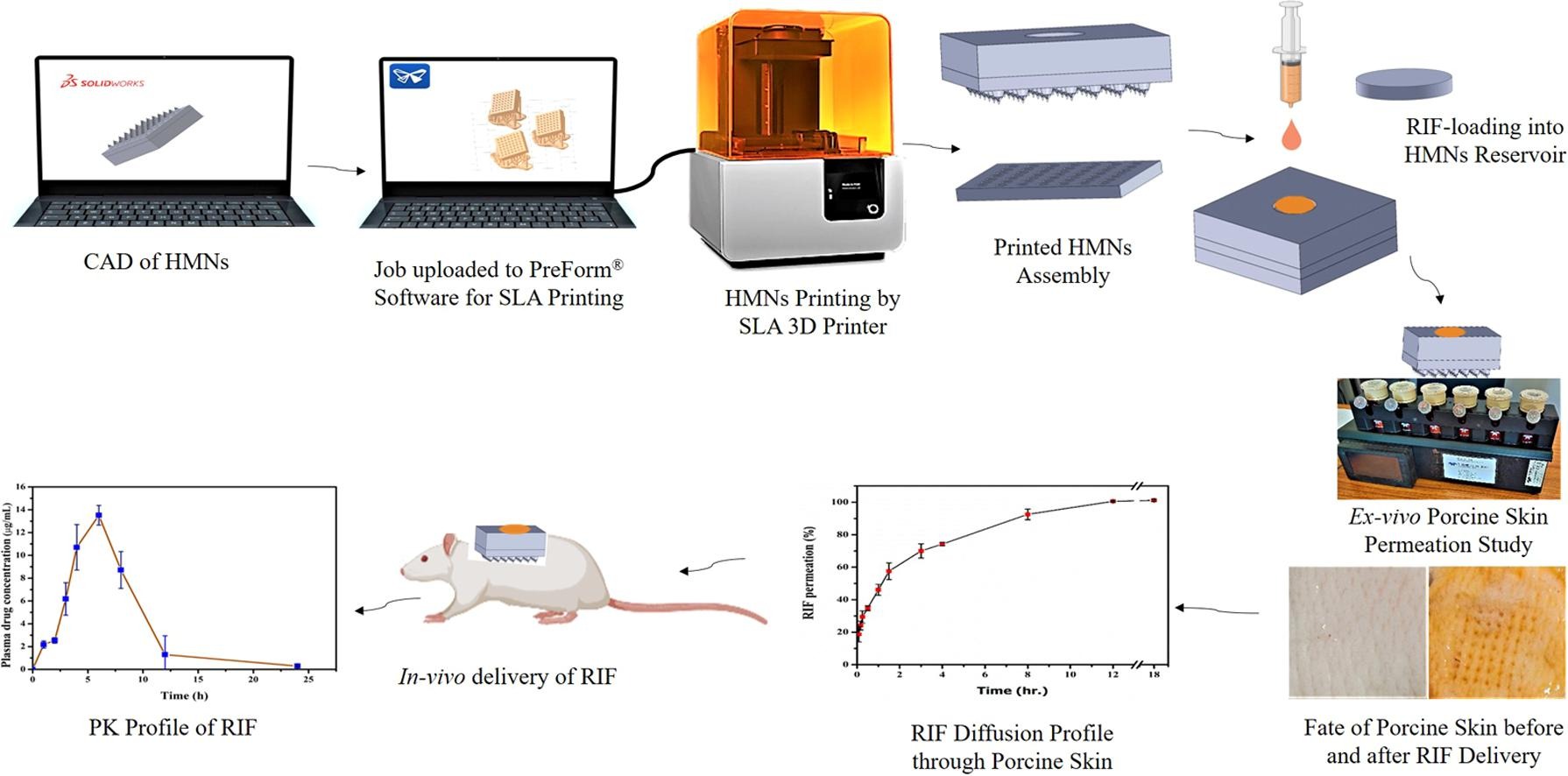3D printed hollow microneedles array using stereolithography for efficient transdermal delivery of rifampicin

A 3D printed assembly of hollow microneedles (HMNs) array, conjoined with a reservoir void, was designed and additively manufactured using stereolithography (SLA) technology utilizing a proprietary class-I resin. The HMNs array was utilized for transdermal delivery of high molecular weight antibiotics, i.e., rifampicin (Mw 822.94 g/mol), which suffers from gastric chemical instability, low bioavailability, and severe hepatotoxicity.
HMNs morphology was designed with sub-apical holes present in a quarter of the needle tip to improve its mechanical strength and integrity of the HMNs array. The HMNs array was characterized by optical microscopy and electron microscopy to ascertain the print quality and uniformity across the array. The system was also subjected to mechanical characterization for failure and penetration analyses.
The ex vivo permeation and consequent transport of rifampicin across porcine skin were systematically evaluated. Finally, in vivo examinations of rifampicin administration through the microneedle reservoir system in SD rats revealed efficient penetration and desired bioavailability.
Article information: Vivek Yadav, Peeyush Kumar Sharma, Upadhyayula Suryanarayana Murty, Narayan H. Mohan, Rajendran Thomas, Santosha Kumar Dwivedy, Subham Banerjee. 3D printed hollow microneedles array using stereolithography for efficient transdermal delivery of rifampicin, International Journal of Pharmaceutics, Volume 605, 2021. https://doi.org/10.1016/j.ijpharm.2021.120815.


